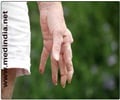Cognitive behavioural therapy for insomnia (CBT-I) may prove to be a boon for older patients with osteoarthritis and comorbid insomnia, a recent study has revealed.
Cognitive behavioural therapy for insomnia (CBT-I) may prove to be a boon for older patients with osteoarthritis and comorbid insomnia, a recent study has revealed.
Reported in the Journal of Clinical Sleep Medicine, the study has shown that the treatment improves both immediate and long-term self-reported sleep and pain in older patients with osteoarthritis and comorbid insomnia without directly addressing pain control.The study report said that the participant who received CBT-I reported significantly decreased sleep latency and wake after sleep onset, significantly reduced pain, and increased sleep efficiency.
The improvements persisted in CBT-I patients (19 of 23) who were further assessed for sleep quality and perceived pain at a one-year follow-up visit.
Lead author Dr. Michael V. Vitiello, professor at the University of Washington in Seattle, said that the findings indicated that insomnia is not merely a symptom of osteoarthritis but rather a co-existing illness.
According to Vitiello, improving sleep could result in an improvement in osteoarthritis, which is particularly important because, at least in older adults, insomnia rarely exits by itself, rather it typically coexists with other illnesses, pain conditions and depression.
"The particular strength of CBT-I is that once an individual learns how to improve their sleep, study after study has shown that the improvement persists for a year or more. What we and others are showing is that CBT-I can not only improve sleep but that improvement of sleep may lead to improvement in co-existing medical or psychiatric illnesses, such as osteoarthritis or depression, and in the case of our study, that these additional benefits can be seen in the long term," said Vitiello.
Advertisement
According to them, the findings indicate that successful treatment of sleep disturbance may improve the quality of life for patients in this population.
Advertisement
Source-ANI
SAV














